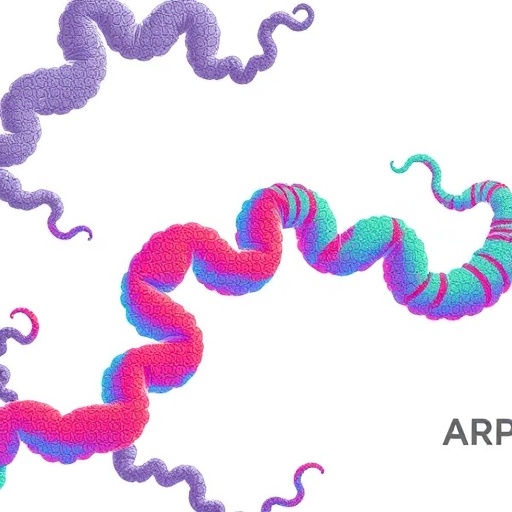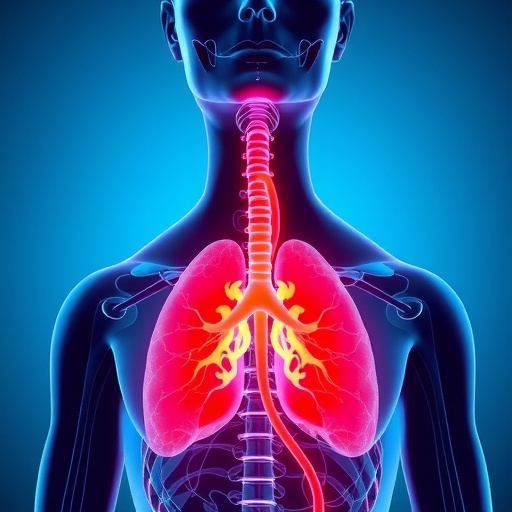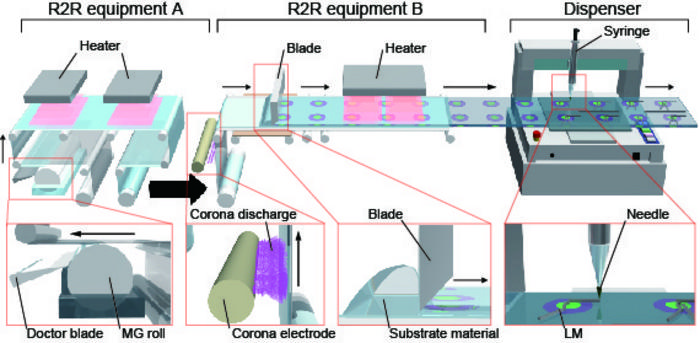Credit: Dr. Yuichiro Arima
Peripheral obstructive arterial disease develops when blood vessels narrow due to arteriosclerosis and blood flow in the legs (or rarely the arms) becomes clogged. Intermittent claudication is when blood flow disturbances in a limb causes pain, numbness, or coldness during physical activity. In severe cases, where the tissue has gone without blood for too long and dies, the limb may have to be amputated.
Previous clinical and animal research showed that mice receive less tissue damage under ischemic condition than humans, but the cause of the difference was not clear. To illustrate why humans seem to have such a disadvantage, researchers from Kumamoto University, Japan focused on collateral vessels that could bypass an obstruction. Using a murine hind limb ischemia model, they compared the shape of mouse hind limb blood vessels with those of a patient who had peripheral obstructive artery disease.
There are techniques, such as radiography, that can be used to visualize the small blood vessels of a mouse but they can only produce two-dimensional images. To obtain more detail, the researchers elected to use a system built by a collaboration of engineering and medical science researchers that established a method for stereoscopic visualization of small structures, the micro X-ray CT. This allowed for the detailed visualization of mouse blood vessels through soft tissue and around bone.
The micro CT scans clarified that when the hind limb of a mouse suffers from ischemia, the inferior gluteal artery expands and functions as a bypass. Even in human patients with peripheral obstructive artery disease, detailed diagnostic images revealed that the inferior gluteal artery expands in response to vascular stenosis (vessel hardening).
Importantly, the researchers also showed that the inferior gluteal artery of the mouse extends to the lower hind leg area, whereas the human inferior gluteal artery terminates much earlier at the buttock. Consequently, the mouse vascular structure is more robust against lower limb ischemia than the human vascular structure.
"Two things are believed to be the causes of the inhibited development of the inferior gluteal artery in humans," said Assistant Professor Yuichiro Arima, who led the study. "One is that the development of the artery is restricted by the skeletal change accompanying bipedal walking, and the other is that, over time, the distance between the pelvis and the lower leg has become too far for the artery to reach. In other words, evolution has increased the human risk for lower limb ischemia. This understanding is expected to lead to the development of treatments that strengthen the collateral circulation pathways for people suffering from peripheral obstructive arterial disease."
This research result was posted online in the Journal of American Heart Association on 23 March 2018.
###
[Source]
Arima, Y., Hokimoto, S., Tabata, N., Nakagawa, O., Oshima, A., Matsumoto, Y., … Tsujita, K. (2018). Evaluation of Collateral Source Characteristics With 3?Dimensional Analysis Using Micro-X?Ray Computed Tomography. Journal of the American Heart Association, 7(6), e007800. doi:10.1161/jaha.117.007800
Media Contact
J. Sanderson & N. Fukuda
[email protected]
http://ewww.kumamoto-u.ac.jp/en/news/
Related Journal Article
http://dx.doi.org/10.1161/JAHA.117.007800





